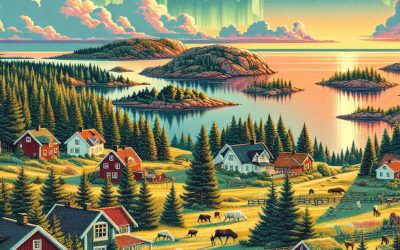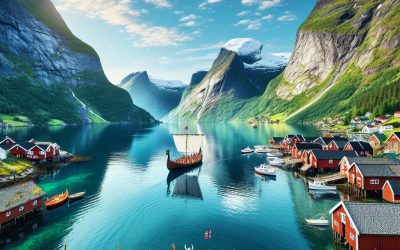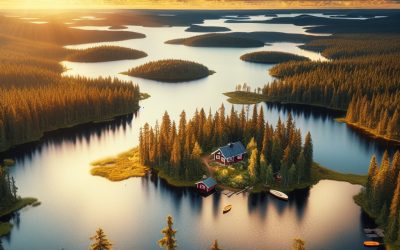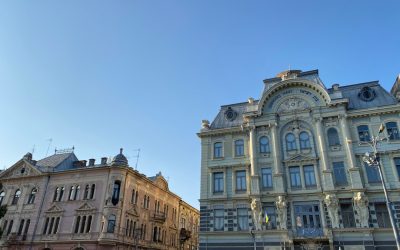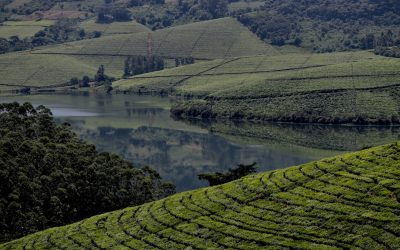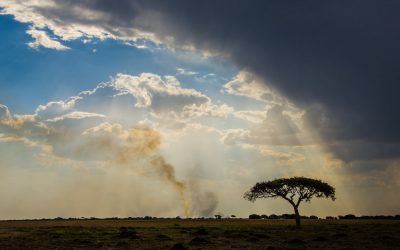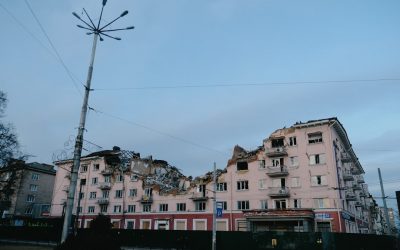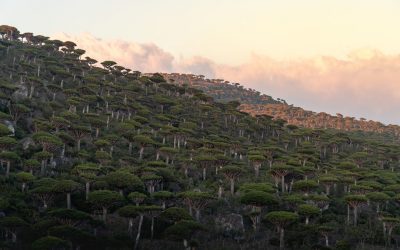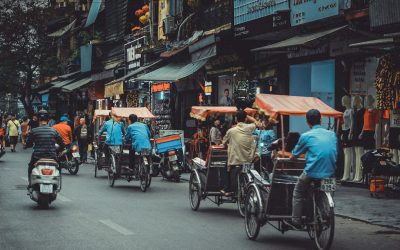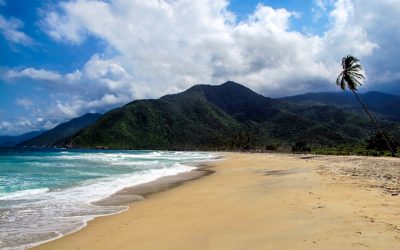World Geography
Geography is the study of the Earth’s landscapes, environments, and the relationships between people and their surroundings. It encompasses both the physical aspects of the Earth, such as its landforms, bodies of water, and climate, as well as the human aspects, including population distribution, cultures, and economies. World geography is a broad field that seeks to understand the complexities of our planet and how humans interact with it. By studying world geography, we can gain a deeper appreciation for the diversity of our planet and the interconnectedness of its various regions.
Geography is a multidisciplinary field that draws on elements of physical science, social science, and humanities. It involves the use of maps, spatial analysis, and geographic information systems (GIS) to understand the Earth’s surface and the processes that shape it. World geography also encompasses the study of human geography, which examines the ways in which people and their activities are distributed across the Earth. By understanding world geography, we can better appreciate the environmental, cultural, and economic challenges facing different regions of the world. This knowledge is crucial for addressing global issues such as climate change, resource management, and international development.
The Five Oceans and Seven Continents
The Earth’s surface is divided into five major oceans: the Pacific, Atlantic, Indian, Southern (or Antarctic), and Arctic Oceans. These vast bodies of water play a crucial role in regulating the Earth’s climate and supporting diverse marine ecosystems. The oceans also serve as important transportation routes and a source of food and other natural resources for human societies around the world.
In addition to the oceans, the Earth’s landmasses are divided into seven continents: Africa, Antarctica, Asia, Europe, North America, Australia (or Oceania), and South America. Each continent has its own unique physical and cultural characteristics, shaped by millions of years of geological processes and human history. From the deserts of Africa to the rainforests of South America, the continents offer a rich tapestry of landscapes and environments for exploration and study.
Major Mountain Ranges and Deserts
The Earth’s surface is also marked by major mountain ranges and deserts that have shaped the planet’s physical and cultural landscapes. The Himalayas, for example, are the highest mountain range in the world and are home to diverse ecosystems and cultures in countries such as India, Nepal, and Bhutan. The Andes in South America, the Rockies in North America, and the Alps in Europe are other prominent mountain ranges that have influenced human settlement patterns and economic activities.
Deserts cover about one-third of the Earth’s land surface and are characterized by low precipitation and extreme temperatures. The Sahara Desert in Africa is the largest hot desert in the world, while the Gobi Desert in Asia is one of the largest cold deserts. Deserts are not only home to unique flora and fauna but have also been important trade routes and cultural crossroads throughout history.
Climate Zones and Biomes
The Earth’s climate is influenced by a variety of factors, including latitude, altitude, ocean currents, and prevailing winds. As a result, the planet is divided into different climate zones, each with its own characteristic weather patterns and ecosystems. The equator, for example, experiences a tropical climate with high temperatures and heavy rainfall, while the polar regions have a cold and dry climate.
These climate zones give rise to different biomes, or large ecological areas characterized by distinct plant and animal communities. The tropical rainforest biome, found near the equator, is home to a diverse array of species and is vital for regulating the Earth’s climate. The grasslands biome, found in regions such as the African savannah and North American prairies, supports grazing animals and has been important for human agriculture throughout history.
Human Geography and Population Distribution
Human geography examines the ways in which people and their activities are distributed across the Earth’s surface. It encompasses topics such as population growth, migration patterns, urbanization, and cultural diversity. Understanding human geography is crucial for addressing global challenges such as poverty, inequality, and environmental degradation.
Population distribution is uneven across the world, with some regions experiencing rapid population growth while others are declining. The majority of the world’s population lives in Asia, particularly in countries such as China and India. Urban areas are also growing rapidly, with more than half of the world’s population now living in cities. This trend has significant implications for infrastructure development, resource management, and social inequality.
Historical and Cultural Geography
Historical geography examines how human activities have shaped the Earth’s landscapes over time. It explores topics such as colonialism, trade routes, and the rise and fall of empires. Cultural geography focuses on how human cultures have developed in different regions of the world and how they interact with their environments.
The Silk Road, for example, was an ancient trade route that connected China with Europe and facilitated the exchange of goods, ideas, and technologies across Eurasia. This historical trade route had a profound impact on the development of cultures and economies along its path. Similarly, cultural geographers study how different societies have adapted to their environments through practices such as agriculture, architecture, and religious beliefs.
The Importance of Geographic Knowledge
Geographic knowledge is crucial for addressing global challenges such as climate change, resource management, and international development. By understanding world geography, we can better appreciate the environmental, cultural, and economic challenges facing different regions of the world. This knowledge is crucial for addressing global issues such as climate change, resource management, and international development.
Geographic knowledge also helps us to understand our interconnectedness with other regions of the world. By studying world geography, we can gain a deeper appreciation for the diversity of our planet and the interconnectedness of its various regions. This understanding can foster a sense of global citizenship and empathy for people from different cultures and backgrounds.
In conclusion, world geography is a complex and multifaceted field that encompasses both physical and human aspects of the Earth’s landscapes. By studying world geography, we can gain a deeper appreciation for the diversity of our planet and the interconnectedness of its various regions. This knowledge is crucial for addressing global challenges such as climate change, resource management, and international development. It also helps us to understand our interconnectedness with other regions of the world and fosters a sense of global citizenship.
FAQs
What is world geography?
World geography is the study of the Earth’s landscapes, environments, and the relationships between people and their environments. It encompasses the physical features of the Earth, as well as the human activity that takes place on it.
Why is world geography important?
World geography is important because it helps us understand the world around us. It provides insights into the physical and human processes that shape our planet, and helps us make informed decisions about how to interact with our environment.
What are the main branches of world geography?
The main branches of world geography include physical geography, which focuses on the Earth’s natural features and processes, and human geography, which examines the relationships between people and their environments.
How does world geography impact our daily lives?
World geography impacts our daily lives in numerous ways, from influencing the weather and climate we experience, to shaping the availability of natural resources and influencing the distribution of populations and cultures around the world.
What are some key concepts in world geography?
Key concepts in world geography include location, place, human-environment interaction, movement, and region. These concepts help geographers understand and interpret the world around them.
Discovering the Hidden Gems of Dnipropetrovs’k: A Journey Through Ukraine’s Industrial Heartland
Dnipropetrovs’k, located in eastern Ukraine, is a city that often goes unnoticed by tourists. However, this hidden gem is definitely worth a visit. With its rich industrial history, vibrant cultural scene, beautiful parks and gardens, and a wide range of tourist attractions, Dnipropetrovs’k has something to offer for everyone. Whether you are interested in exploring the city’s past, immersing yourself in its culture, enjoying delicious cuisine, or simply relaxing in its natural beauty, Dnipropetrovs’k has it all. When visiting Dnipropetrovs’k, you can expect to be pleasantly surprised by the city’s charm and character. The city may not have the same level of fame as other Ukrainian cities like Kyiv or Lviv, but it has its own unique appeal. Dnipropetrovs’k offers a more authentic and less touristy experience, allowing you to truly immerse yourself in Ukrainian culture and daily life. From its bustling markets to its quiet parks, the city has a certain charm that is hard to find elsewhere. Summary Dnipropetrovs’k is a city full of hidden gems waiting to be discovered. The city has a rich industrial history that can be explored through its museums and monuments. From theatres to art galleries, Dnipropetrovs’k has a vibrant cultural scene. Visitors can enjoy traditional Ukrainian cuisine as well as international flavours at the city’s best restaurants. Dnipropetrovs’k’s parks and gardens offer a chance to discover the city’s natural beauty. The Industrial History of Dnipropetrovs’k: A Journey Through Ukraine’s Past Dnipropetrovs’k played a crucial role in Ukraine’s industrial development. The city was founded in 1776 as a fortress and quickly grew into an important industrial center. During the Soviet era, Dnipropetrovs’k...
Sweden
Sweden (Konungariket Sverige (Kingdom of Sweden)) Capital: Stockholm Population (Estimated July 2012): 9,103,788 Area: 450,295km2 or 173,860mi2 Currency: Swedish Krona (SEK) Official Language: Swedish Political Information: Constitutional Monarchy with Parliamentary Democracy Official Religion: No Official Religion (approximately 87% of the population is Lutheran and 13% have other religious beliefs) Highest Mountain: Kebnekaise Sydtopp at 2,104m or 6,903ft Largest River: Time Zone (GMT/UTC): +1:00 Wildlife: Counties/Provinces/States: 21 counties (lan, singular and plural); Blekinge, Dalarna, Gavleborg, Gotland, Halland, Jamtland, Jonkoping, Kalmar, Kronoberg, Norrbotten, Orebro, Ostergotland, Skane, Sodermanland, Stockholm, Uppsala, Varmland, Vasterbotten, Vasternorrland, Vastmanland, Vastra Gotaland Sweden Sweden, the largest country in Northern Europe, is characterised by its diverse geography, which ranges from vast forests and numerous lakes to rugged mountains and a long coastline. The country spans approximately 450,000 square kilometres, making it the third-largest country in Europe by area. Sweden is bordered by Norway to the west and Finland to the east, while the southern tip is connected to Denmark via the Øresund Bridge. The landscape is predominantly flat or gently rolling, with the Scandinavian Mountains running along the western border. This mountainous region is home to Sweden’s highest peak, Kebnekaise, which rises to 2,106 metres above sea level. The climate of Sweden varies significantly from north to south. The northern regions experience a subarctic climate, characterised by long, cold winters and short, mild summers. In contrast, southern Sweden enjoys a temperate maritime climate, with milder winters and warmer summers. The coastal areas are influenced by the Gulf Stream, which helps moderate temperatures. Precipitation is fairly evenly distributed throughout the year, although the northern parts receive more snow during winter...
Norway
Norway (Kongeriket Norge (Kingdom of Norway)) Capital: Oslo Population (Estimated July 2012): 4,707,270 Area: 385,179km2 or 148,718mi2 Currency: Norwegian Krone (Plural. Kroner; NOK) Official Language: Norwegian and Sami Political Information: Constitutional Monarchy and Parliamentary Democracy Official Religion: Evangelical Lutheran(approximately 85.7% of the population are Evangelical Lutheran (church of Norway), 4.4% have other Christian beliefs, 1.8% are Muslim and 8.1% have other religious beliefs) Highest Mountain: Galdhopiggen at 2,469m or 8,100ft Largest River: Time Zone (GMT/UTC): +1:00 Wildlife: Counties/Provinces/States: 19 counties (fylker, singular – fylke); Akershus, Aust-Agder, Buskerud, Finnmark, Hedmark, Hordaland, More og Romsdal, Nordland, Nord-Trondelag, Oppland, Oslo, Ostfold, Rogaland, Sogn og Fjordane, Sor-Trondelag, Telemark, Troms, Vest-Agder, Vestfold Additional: On the 7th of June 1905 Norway declared its union with Sweden dissolved which was agreed by Sweden on the 26th of October that year. Norway Norway, officially the Kingdom of Norway, is a Scandinavian country situated in Northern Europe. It is renowned for its striking natural landscapes, including fjords, mountains, and coastal regions. The nation is also notable for its rich history, vibrant culture, and robust economy. With a population exceeding 5 million, Norway is recognised for its high standard of living and comprehensive social welfare system. The capital city, Oslo, is a thriving metropolis with a rich cultural scene and a flourishing economy. Norway is also known for its strong maritime traditions and hosts one of the world’s largest shipping industries. With its unique combination of natural beauty, rich history, and modern amenities, Norway is a popular destination for tourists worldwide. Norway boasts a long and intriguing history dating back to the Viking Age. The country was unified as a single...
Finland
Finland (Suomen Tasavalta (Finnish); Republiken Finland (Swedish) (Republic of Finland)) Capital: Helsinki Population (Estimated July 2012): 5,262,930 Area Total: 338,424 km2 or 130,666 mi2 Currency: Euro (€) Official Language: Finnish or Swedish Political Information: Parliamentary Republic Official Religion: Lutheran Church of Finland (approximately 82.5% of the population are Lutheran, 2.3% have other religious beliefs and 15.1% have no religious beliefs) Highest Mountain: Haltiatunturi at 1,328m or 4,357ft Largest River: Time Zone (GMT/UTC): +2:00 Wildlife: Counties/Provinces/States: 19 regions (maakunnat, singular – maakunta (Finnish); landskapen, singular – landskapet (Swedish)); Aland (Swedish), Ahvenanmaa (Finnish); Etela-Karjala (Finnish), Sodra Karelen (Swedish) [South Karelia]; Etela-Pohjanmaa (Finnish), Sodra Osterbotten (Swedish) [South Ostrobothnia]; Etela-Savo (Finnish), Sodra Savolax (Swedish) [South Savo]; Kanta-Hame (Finnish), Egentliga Tavastland (Swedish); Kainuu (Finnish), Kajanaland (Swedish); Keski-Pohjanmaa (Finnish), Mellersta Osterbotten (Swedish) [Central Ostrobothnia]; Keski-Suomi (Finnish), Mellersta Finland (Swedish) [Central Finland]; Kymenlaakso (Finnish), Kymmenedalen (Swedish); Lappi (Finnish), Lappland (Swedish); Paijat-Hame (Finnish), Paijanne-Tavastland (Swedish); Pirkanmaa (Finnish), Birkaland (Swedish) [Tampere]; Pohjanmaa (Finnish), Osterbotten (Swedish) [Ostrobothnia]; Pohjois-Karjala (Finnish), Norra Karelen (Swedish) [North Karelia]; Pohjois-Pohjanmaa (Finnish), Norra Osterbotten (Swedish) [North Ostrobothnia]; Pohjois-Savo (Finnish), Norra Savolax (Swedish) [North Savo]; Satakunta (Finnish and Swedish); Uusimaa (Finnish), Nyland (Swedish) [Newland]; Varsinais-Suomi (Finnish), Egentliga Finland (Swedish) [Finland Proper] Additional: Independence from Russia on the 6th of December 1917. Finland Finland, officially known as the Republic of Finland, is a Nordic country located in Northern Europe. It shares its borders with Sweden to the west, Russia to the east, and Norway to the north, while Estonia lies to its south across the Gulf of Finland. The country is known for its stunning natural landscapes, including thousands of lakes, dense forests, and the iconic Northern Lights. With a population of around 5.5 million people,...
Discovering the Hidden Gems of Chernivtsi: A Journey Through the Heart of Ukraine
Chernivtsi, located in western Ukraine, is a city that is rich in history and culture. With its stunning architecture, vibrant cultural scene, and fascinating Jewish heritage, Chernivtsi is a must-visit destination for travelers. The city has a long and storied past, having been part of various empires and countries throughout its history. Today, it stands as a testament to the diverse influences that have shaped it over the years. Chernivtsi was founded in the 12th century and has since been ruled by the Moldavian Principality, the Ottoman Empire, the Habsburg Monarchy, Romania, and the Soviet Union. Each of these periods has left its mark on the city’s architecture and culture, creating a unique blend of styles and traditions. The most notable example of this is the Chernivtsi University, which was built in the late 19th century and is considered one of the finest examples of Secessionist architecture in Europe. In addition to its architectural marvels, Chernivtsi is also home to a vibrant cultural scene. The city boasts numerous museums, galleries, and theatres that showcase its rich cultural heritage. Visitors can explore the collections of the Chernivtsi Museum of Fine Arts, which houses works by Ukrainian and European artists, or catch a performance at the Chernivtsi Drama Theatre, one of the oldest theatres in Ukraine. With its rich history and vibrant cultural scene, Chernivtsi offers something for every traveler. Summary Chernivtsi is a city with a rich history and culture, making it a must-visit destination. The city’s architectural marvels, including landmarks like the Chernivtsi University and the City Hall, are worth exploring on foot. Chernivtsi’s museums, galleries, and theatres offer...
Exploring the Beauty and Rich Culture of Zimbabwe: A Journey Through Southern Africa
Zimbabwe, located in Southern Africa, is a country that is often overlooked by travelers. However, it is a hidden gem that offers a wealth of natural wonders, rich history and culture, vibrant city life, and unique experiences. With its stunning landscapes, diverse wildlife, and warm hospitality, Zimbabwe is truly a must-visit destination. Zimbabwe has a fascinating history that dates back thousands of years. It was once home to the ancient civilization of Great Zimbabwe, which left behind impressive ruins that are now a UNESCO World Heritage Site. The country has also seen its fair share of political and economic challenges in recent decades, but it has emerged as a resilient nation that is ready to welcome visitors with open arms. Summary Zimbabwe is a beautiful country located in Southern Africa. The natural wonders of Zimbabwe are breathtaking and worth exploring. Zimbabwe has a rich history and culture that is worth learning about. Harare is a vibrant city with a lot to offer visitors. Zimbabwe’s national parks offer a unique safari adventure. Discovering the Natural Wonders of Zimbabwe One of the most iconic natural wonders in Zimbabwe is Victoria Falls. Known as “The Smoke That Thunders,” Victoria Falls is one of the Seven Natural Wonders of the World and is shared by both Zimbabwe and Zambia. The sheer power and beauty of the falls are awe-inspiring, and visitors can experience them up close through various activities such as helicopter rides, bungee jumping, and white water rafting. Another must-visit destination for nature lovers is Hwange National Park. This park is home to the Big Five (elephant, lion, leopard, buffalo, and rhino)...
Exploring the Wonders of Zambia: A Journey Through the Heart of Africa
Located in southern Africa, Zambia is a landlocked country known as the “Jewel of Africa.” With its rich history, diverse culture, and breathtaking landscapes, Zambia is a must-visit destination for travelers. The country is bordered by eight other countries, including Tanzania, Malawi, Mozambique, Zimbabwe, Botswana, Namibia, Angola, and the Democratic Republic of the Congo. Zambia has a fascinating history that dates back thousands of years. It was inhabited by hunter-gatherers and later became home to various Bantu-speaking tribes. In the late 19th century, Zambia was colonized by the British and was known as Northern Rhodesia. It gained independence in 1964 and changed its name to Zambia. Zambian culture is incredibly diverse, with over 70 ethnic groups living in the country. Each group has its own traditions, languages, and customs. The Zambian people are known for their warm hospitality and welcoming nature, making visitors feel right at home. Summary Zambia is known as the Jewel of Africa, with its stunning natural beauty and diverse wildlife. A wildlife safari in Zambia offers the chance to encounter the Big Five and other rare species. Victoria Falls is a must-see natural wonder of the world, with its breathtaking views and thrilling activities. The Zambezi River is a journey through the heart of Zambia, offering opportunities for adventure and relaxation. Lusaka, the capital city of Zambia, is a vibrant hub of culture, history and modern development. Wildlife Safari: A Thrilling Encounter with the Big Five One of the main reasons why Zambia is a must-visit destination is its incredible wildlife. The country is home to numerous national parks and game reserves that offer thrilling...
Exploring the Historic City of Chernihiv: A Journey Through Time
Chernihiv, located in northern Ukraine, is a city rich in cultural heritage and history. With its ancient streets, magnificent architecture, and fascinating history, Chernihiv offers visitors a unique and immersive experience. From its iconic landmarks to its artistic treasures, there is something for everyone to discover in this charming city. In this article, we will explore the rich cultural heritage of Chernihiv and all that it has to offer. Summary Chernihiv boasts a rich cultural heritage waiting to be discovered. Walking through the ancient streets of Chernihiv is like taking a step back in time. The magnificent architecture of Chernihiv is a sight to behold. Uncovering the fascinating history of Chernihiv is a must for any history buff. Visiting the iconic landmarks of Chernihiv is a great way to experience the city’s unique charm. Discovering the Rich Cultural Heritage of Chernihiv Chernihiv has a long and storied history, dating back to the 9th century. It was once the capital of the Chernihiv Principality and played a significant role in the development of Ukrainian culture and identity. The city’s historical significance is evident in its numerous architectural landmarks and cultural institutions. Chernihiv is also known for its contributions to Ukrainian literature and art. Many famous writers and artists have hailed from Chernihiv or found inspiration in its rich cultural heritage. The city has been a muse for countless poets, painters, and musicians throughout history. Walking Through the Ancient Streets of Chernihiv One of the highlights of visiting Chernihiv is exploring its old town. The ancient streets are filled with charm and character, transporting visitors back in time. Walking through these...
The Crisis in Yemen: A Call for International Aid and Support
The ongoing conflict in Yemen has been described as one of the world’s worst humanitarian crises. The conflict, which began in 2014, has resulted in widespread violence, displacement, and a severe lack of basic necessities for the Yemeni people. This article will provide an in-depth analysis of the crisis, its impact on Yemeni civilians, the urgent need for international aid and support, the role of the international community in ending the crisis, the challenges of delivering aid in Yemen, the importance of addressing the root causes of the crisis, the impact on Yemen’s economy and infrastructure, the role of NGOs in providing aid and support, the impact on Yemeni children and women, and the need for a long-term solution to the crisis. Summary Ongoing conflict in Yemen has led to a humanitarian crisis. Yemeni civilians are suffering greatly due to the crisis. International aid and support is urgently needed to alleviate the crisis. The international community must play a role in ending the crisis. Delivering aid in Yemen is challenging due to the conflict. The ongoing conflict in Yemen: a humanitarian crisis The conflict in Yemen began in 2014 when Houthi rebels took control of the capital city, Sana’a, and forced President Abdrabbuh Mansur Hadi to flee to Saudi Arabia. In response, a coalition led by Saudi Arabia launched a military intervention to restore Hadi’s government. Since then, the conflict has escalated into a full-blown civil war, with multiple factions vying for control of different parts of the country. The impact of this conflict on Yemeni civilians has been devastating. According to the United Nations, more than 24 million...
Discovering the Wonders of Vietnam: A Journey Through Southeast Asia’s Hidden Gem
Vietnam is a country that has captured the hearts of many travelers with its rich history, stunning landscapes, vibrant cities, and delicious cuisine. Located in Southeast Asia, Vietnam is known for its diverse culture, friendly people, and endless wonders waiting to be explored. From the bustling streets of Hanoi to the tranquil beauty of Halong Bay, Vietnam offers something for every type of traveler. Whether you’re interested in history, nature, food, or adventure, Vietnam has it all. Summary Vietnam is a land of endless wonders, with a rich cultural heritage and natural beauty. The country’s history and traditions are fascinating to explore, from ancient temples to modern cities. Vietnam’s natural beauty is breathtaking, with lush forests, pristine beaches, and stunning landscapes. The vibrant cities of Vietnam, including Hanoi and Ho Chi Minh City, offer a unique blend of old and new. Vietnam’s cuisine is a highlight of any trip, with delicious flavours and Southeast Asian influences. The Rich Cultural Heritage of Vietnam Vietnam has a long and fascinating history that is deeply rooted in its culture and traditions. From ancient times to the present day, Vietnam has been influenced by various cultures, most notably Chinese and French. The Chinese ruled over Vietnam for over a thousand years, leaving behind a lasting impact on the language, customs, and beliefs of the Vietnamese people. The French also had a significant influence on Vietnam during their colonial rule in the 19th and 20th centuries. This can be seen in the architecture, cuisine, and even the language. Family and community are highly valued in Vietnamese culture. The concept of filial piety is deeply...
Exploring the Hidden Gems of Cherkasy: A Journey Through the Heart of Ukraine
Cherkasy, located in central Ukraine, is a city with a rich history and vibrant culture. The city dates back to the 13th century and has been influenced by various civilizations throughout the centuries. From its medieval roots to its modern-day charm, Cherkasy offers visitors a unique blend of historical landmarks, cultural attractions, and natural wonders. Cherkasy is worth visiting for several reasons. Firstly, its historical significance cannot be overlooked. The city has played a crucial role in Ukrainian history, with many important events taking place within its borders. From the Cossack era to the Soviet period, Cherkasy has witnessed the rise and fall of empires, making it a fascinating destination for history enthusiasts. Secondly, Cherkasy’s cultural scene is thriving. The city is home to numerous museums, galleries, and theatres that showcase Ukrainian art and culture. Visitors can immerse themselves in the local traditions and customs through various festivals and celebrations held throughout the year. Cherkasy’s cultural heritage is deeply rooted in its people, and exploring the city’s cultural offerings is a must for anyone looking to experience the true essence of Ukraine. Summary Cherkasy is a city with a rich history and culture, offering a variety of experiences for visitors. The natural wonders of Cherkasy, including the Dnieper River and Kremenchuk Reservoir, are not to be missed. Cherkasy’s architectural treasures are hidden gems waiting to be discovered. The city’s museums and galleries offer a journey through Ukrainian art and history. Tasting the flavours of Cherkasy is a culinary adventure through the heart of Ukraine. Discovering the Natural Wonders of Cherkasy: From the Dnieper River to the Kremenchuk Reservoir One...
Venezuela’s Turmoil: A Deep Dive into the Country’s Economic and Political Crisis
Venezuela is currently facing one of the most severe crises in its history. The country is plagued by hyperinflation, food and medicine shortages, and political instability. It is important to understand the history and causes of this crisis in order to fully grasp the magnitude of the situation and find possible solutions. Summary Venezuela’s turmoil is a result of a combination of factors, including economic collapse, hyperinflation, humanitarian crisis, corruption, and political unrest. Hugo Chavez’s socialist revolution initially brought hope to the country, but mismanagement and corruption led to its downfall. The economic collapse of Venezuela was caused by a combination of factors, including over-reliance on oil, mismanagement, and corruption. Hyperinflation and the collapse of the Bolivar have had a devastating impact on Venezuelans, leading to food and medicine shortages and widespread poverty. The Maduro government’s corruption and mismanagement have exacerbated the crisis, leading to international sanctions and diplomatic pressure. The Rise and Fall of Hugo Chavez’s Socialist Revolution Hugo Chavez, a charismatic leader, came to power in Venezuela in 1999 with promises of a socialist revolution that would uplift the poor and marginalized. He implemented a series of policies aimed at redistributing wealth, nationalizing industries, and providing social programs for the most vulnerable. While Chavez’s policies initially gained popularity among the lower classes, they soon faced criticism for their impact on the economy. The nationalization of industries led to a decline in productivity and efficiency, while price controls and currency manipulation created distortions in the market. As a result, Venezuela became heavily dependent on oil exports, leaving it vulnerable to fluctuations in oil prices. Chavez’s death in 2013...

